Structure Of Dna
Structure Of Dna Assignment Help | Structure Of Dna Homework Help
Structure of DNA
The DNA molecule consists of two helically twisted strands connected together by ‘steps’. Each strand consists of alternating molecules of deoxyribose and phosphate groups. Each step is made up of a double ring purine base and a single ring pyramiding base. The purine and pyrimidine bases and a single ring pyramiding base. The purine and pyrimidine bases are connected to deoxyribose sugar molecules. The two strands are interwined in a clockwise direction, i.e. in a right hand helix, and run in opposite directions. The strand completes a turn each 34A.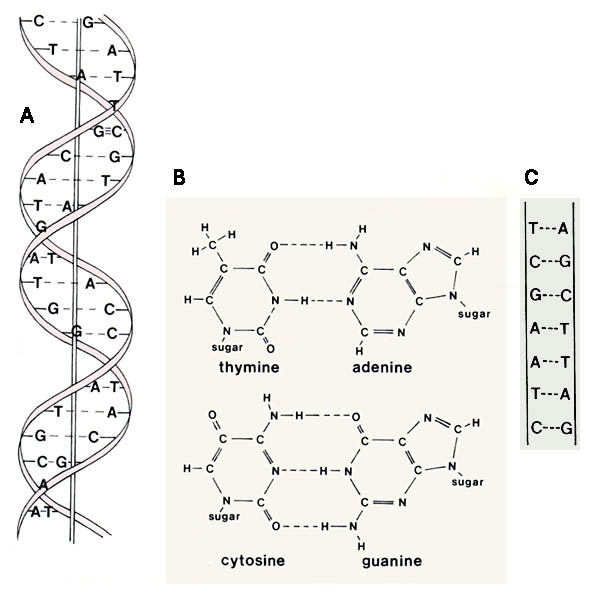
The DNA molecule is a polymer consisting of several thousand pairs of nucleotide monomers. Each nucleotide consists of the pentose sugar deoxyribose, a phosphate group and a nitrogenous base which may be either a purine or a pyrimidine. Deoxyribose and a nitrogenous base together form a nucleoside. A nucleoside and a phosphate together form a nucleotide.
Nucleoside = Deoxyribose + Nitrogenous base.
Nucleotide = Deoxyribose + Nitrogenous base + Phosphate together form a nucleotide.
1. Deoxyribose is a pentose sugar with five carbon atoms. Four of the five carbon atoms plus a single atom of oxygen form a five membered ring. The fifth carbon atom is outside the ring and forms a part of a –CH2 group.
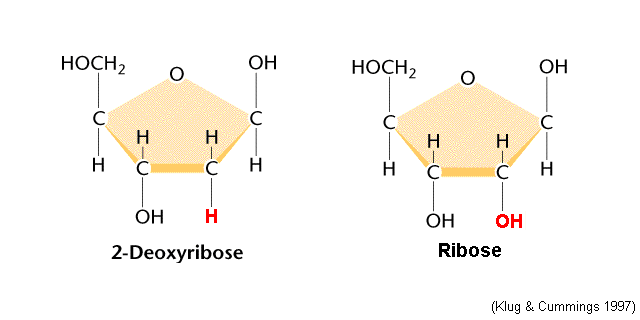
Ribose, the pentose sugar of RNA, has an identical structure expect that there is an –OH group instead of H on carbon atom 2’. All the sugars in on e strand are directed to one end, i.e., the strand has polarity. The sugars of the two strands are directed in opposite directions.
2. Nitrogenous bases. There are two types of nitrogenous bases, pyrimidines and purines. The pyrimidines are single ring compounds, with nitrogen in positions 1’ and 3’ of a 6-membered benzene ring. The two most common pyrimidines of DNA are cytosine (C) and thymine (T). Te two most common purines of DNA are adenine (A) and guanine (G).
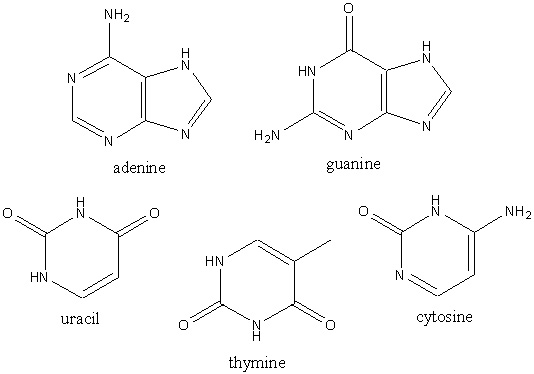
3. Phosphate. In the DNA strand the phosphate groups alternate with deoxyribose. Each phosphate group is joined to carbon atom 3’ of one deoxyribose and to carbon atom 5’ of another. Thus each strand has a 3’ end and a 5’ end. The two strands are oriented in opposite directions. The 3’ end of one strand corresponding to the 5’ end of the other. Consequently the oxygen atoms of deoxyribose point in opposite directions in the two strands.
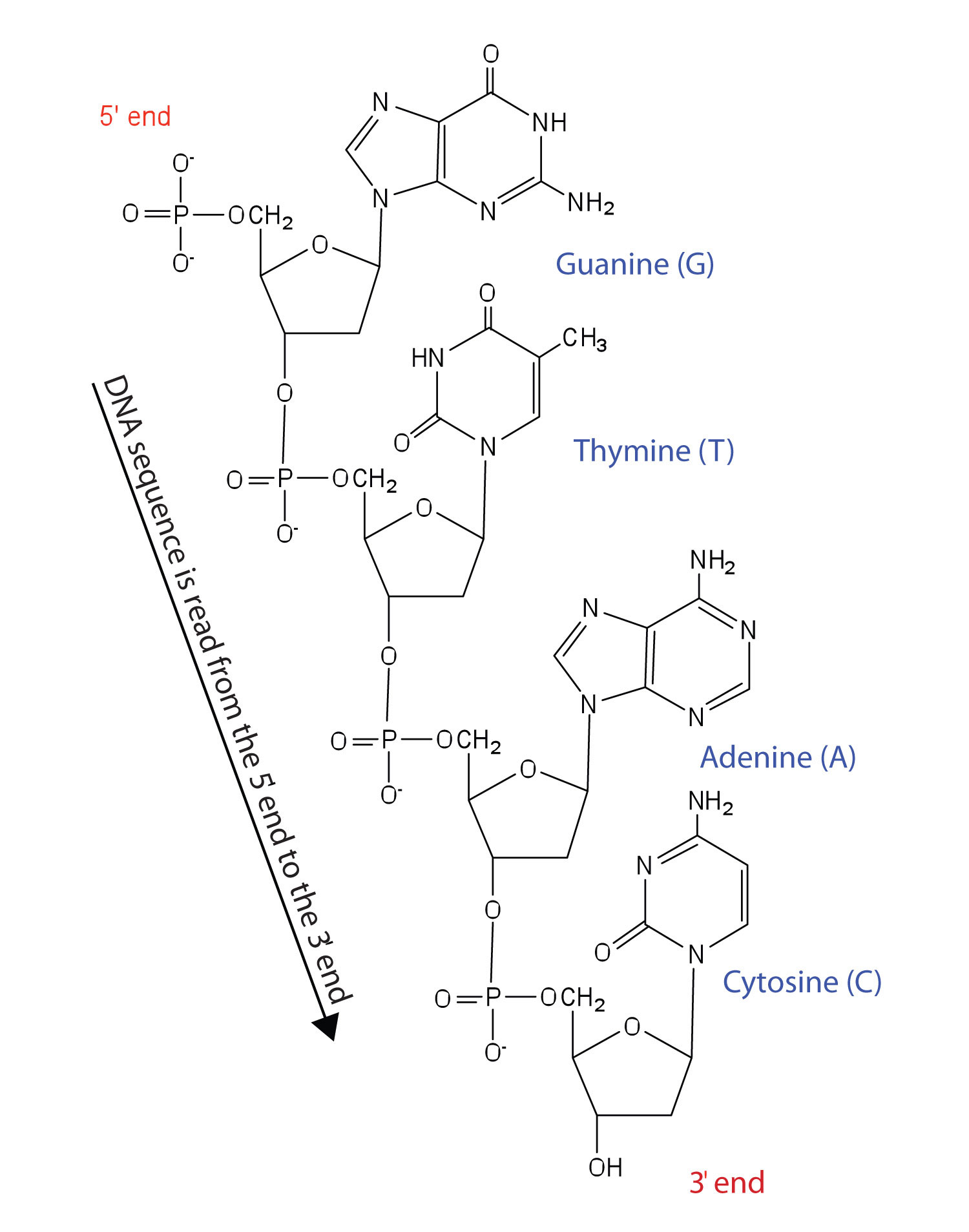
Nucleosides and Nuclotides. A sugar molecule and a nitrogenous base form a nucleoside and a nucleoside plus a phosphate group forms a nucleotide a nucleoside. In other words a nucleoside is a base-sugar combination and a nucleotide is a nucleoside phosphate.
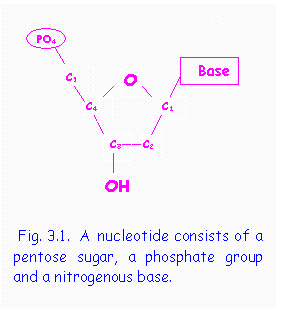
For more help in Structure of DNA please click the button below to submit your homework assignment.